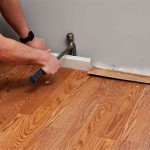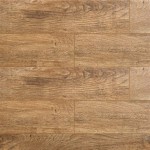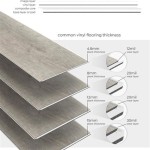Is Solid Wood Flooring More Expensive Than Engineered Oak?
The choice between solid wood and engineered oak flooring often hinges on budget considerations. While both offer the aesthetic appeal of wood, their construction and installation methods can significantly impact the overall cost. Understanding the factors contributing to the price difference between these two flooring types can help consumers make informed decisions.
Solid wood flooring, as the name suggests, is made from a single piece of hardwood timber. This construction contributes to its durability and longevity, often lasting for generations with proper care. The thickness of solid wood planks allows for multiple sanding and refinishing cycles, further extending its lifespan. However, this robust construction also comes at a price. The material cost for solid wood is generally higher due to the quantity of timber required. Furthermore, installation can be more complex, necessitating specific subfloor preparations and potentially increasing labor costs.
Engineered oak flooring, on the other hand, utilizes a layered construction. A thin veneer of oak is bonded to a core typically made of plywood or high-density fiberboard (HDF). This construction provides stability and resistance to moisture fluctuations, making it suitable for installations over concrete subfloors or in areas with higher humidity levels, such as basements. The use of a relatively small amount of oak for the veneer layer reduces the overall material cost compared to solid wood. Furthermore, the engineered construction often allows for easier installation methods, such as click-lock systems, which can potentially lower labor costs.
Material costs play a significant role in the overall price difference between solid wood and engineered oak. Solid wood flooring, being made entirely of hardwood, requires a larger volume of high-quality timber. The specific species of wood chosen also impacts the price, with rarer or more exotic hardwoods commanding higher premiums. Engineered oak, while still utilizing real oak for the veneer, reduces the overall material cost by employing a core made of less expensive materials.
Installation costs are another key factor to consider. Solid wood flooring typically requires more specialized installation techniques. Nailing or gluing is the traditional method, which can be labor-intensive. Subfloor preparation is crucial for solid wood installation to ensure a level and stable surface. Engineered oak flooring often offers more straightforward installation options, including floating installations with click-lock systems. These methods can reduce installation time and therefore labor costs. The complexity of the installation and the specific subfloor requirements will impact the final price.
Long-term maintenance costs should also be factored into the overall cost comparison. While solid wood flooring offers the advantage of refinishing, this process involves sanding down the existing finish and applying a new one, incurring both material and labor costs. The frequency of refinishing depends on wear and tear, but it can be a significant expense. Engineered oak flooring, with its thinner veneer, has limited refinishing potential. While minor scratches can sometimes be repaired, deep damage may necessitate plank replacement. The lifespan and maintenance requirements of each flooring type influence the long-term cost.
Beyond the initial purchase and installation costs, factors such as underlayment, finishing, and additional materials can contribute to the overall project budget. Underlayment is often recommended for both solid wood and engineered flooring to provide sound insulation and moisture protection. The type and quality of underlayment chosen will impact the cost. Finishing options, such as staining or sealing, can add to the expense for both flooring types. Furthermore, additional materials like trims, moldings, and adhesives should be factored into the overall budget.
The specific pricing for both solid wood and engineered oak flooring can vary widely based on factors such as wood species, plank width, thickness, and manufacturer. Comparing quotes from multiple suppliers is crucial for determining the most competitive pricing for a specific project. Considering the long-term costs associated with maintenance and potential repairs is also essential for making an informed investment decision.
Ultimately, the question of whether solid wood flooring is more expensive than engineered oak depends on a variety of factors. While solid wood often has a higher initial cost due to material and installation complexity, its longevity and refinishing potential can contribute to long-term value. Engineered oak, with its lower initial cost and easier installation, offers a viable alternative, particularly for budget-conscious consumers or those seeking a more moisture-resistant option. Careful consideration of individual project needs, budget constraints, and long-term cost implications is essential for making the optimal flooring choice.

Engineered Wood Vs Solid Which Is Better Flooring

Solid Vs Engineered Hardwood Which Is Better

Which Is More Better For Solid Or Engineered Wood Flooring

Engineered Wood Flooring Vs Solid Forté

Engineered Oak Flooring Vs Solid Strathearn Scotland

Engineered Wood Vs Solid Which Is Better Flooring

Engineered Wood Vs Solid Flooring Which Is Best

Wood Plastic Composite Lvt Vs Engineered Oak Jfj Flooring

Engineered Wood Vs Solid Which Is Better Flooring

Breaking Through The Myths 5 Reasons Why Engineered Oak Wood Flooring Is Not As Expensive You Think
See Also







